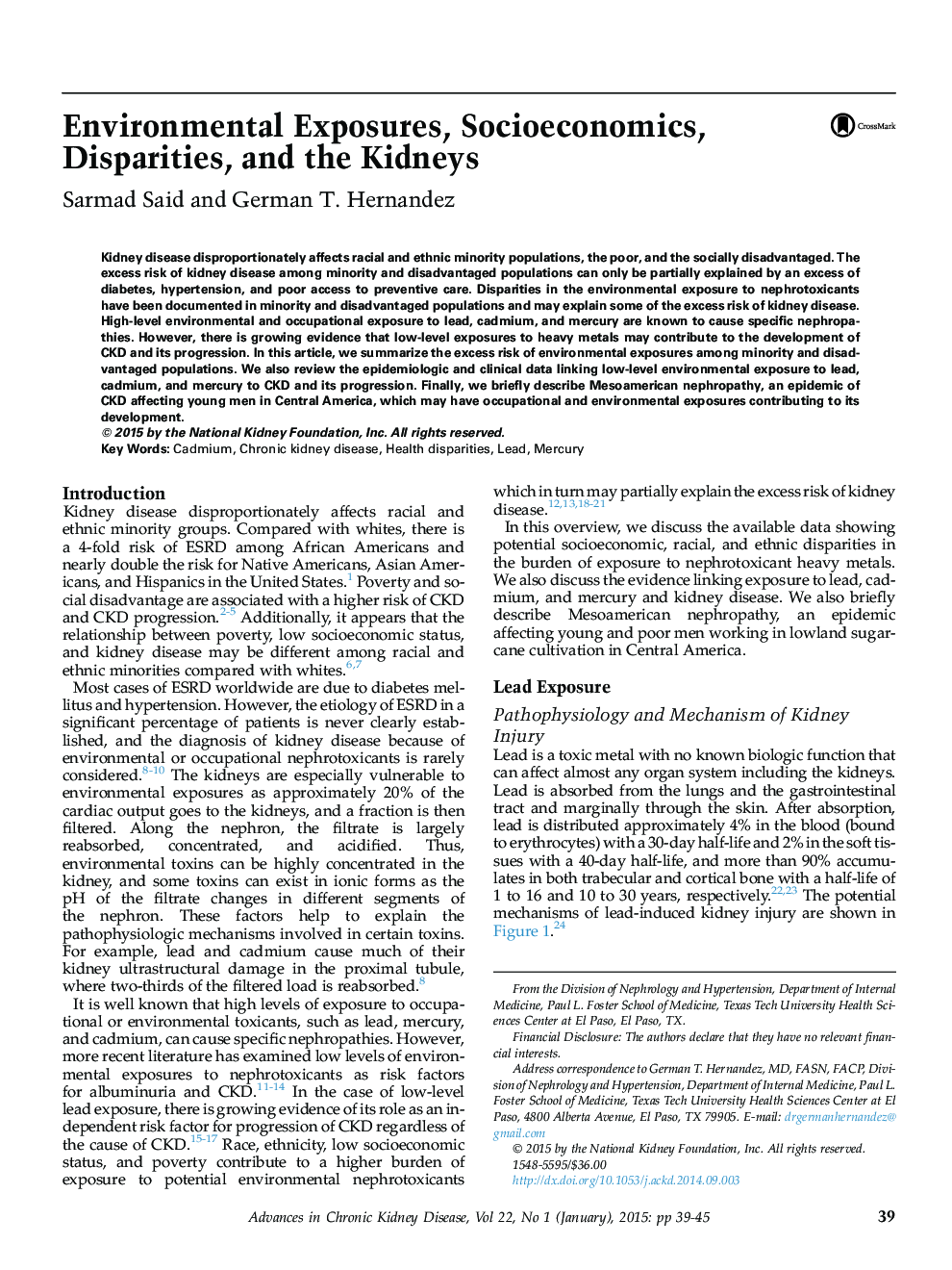| Article ID | Journal | Published Year | Pages | File Type |
|---|---|---|---|---|
| 3846545 | Advances in Chronic Kidney Disease | 2015 | 7 Pages |
Abstract
Kidney disease disproportionately affects racial and ethnic minority populations, the poor, and the socially disadvantaged. The excess risk of kidney disease among minority and disadvantaged populations can only be partially explained by an excess of diabetes, hypertension, and poor access to preventive care. Disparities in the environmental exposure to nephrotoxicants have been documented in minority and disadvantaged populations and may explain some of the excess risk of kidney disease. High-level environmental and occupational exposure to lead, cadmium, and mercury are known to cause specific nephropathies. However, there is growing evidence that low-level exposures to heavy metals may contribute to the development of CKD and its progression. In this article, we summarize the excess risk of environmental exposures among minority and disadvantaged populations. We also review the epidemiologic and clinical data linking low-level environmental exposure to lead, cadmium, and mercury to CKD and its progression. Finally, we briefly describe Mesoamerican nephropathy, an epidemic of CKD affecting young men in Central America, which may have occupational and environmental exposures contributing to its development.
Related Topics
Health Sciences
Medicine and Dentistry
Nephrology
Authors
Sarmad Said, German T. Hernandez,
